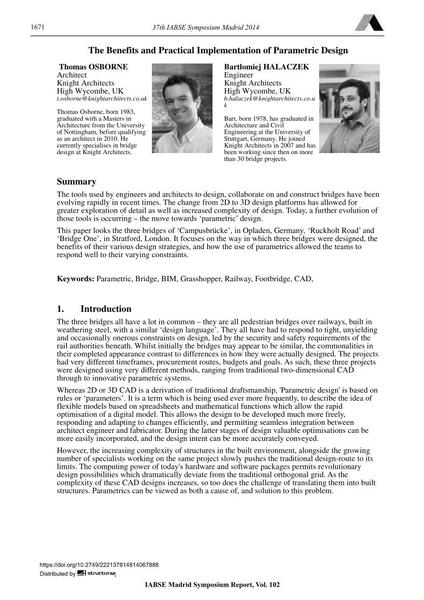The Benefits and Practical Implementation of Parametric Design

|
|
|||||||||||
Bibliographic Details
| Author(s): |
Thomas Osborne
Bartlomiej Halaczek |
||||
|---|---|---|---|---|---|
| Medium: | conference paper | ||||
| Language(s): | English | ||||
| Conference: | IABSE Symposium: Engineering for Progress, Nature and People, Madrid, Spain, 3-5 September 2014 | ||||
| Published in: | IABSE Symposium Madrid 2014 | ||||
|
|||||
| Page(s): | 1671-1677 | ||||
| Total no. of pages: | 7 | ||||
| Year: | 2014 | ||||
| DOI: | 10.2749/222137814814067888 | ||||
| Abstract: |
The tools used by engineers and architects to design, collaborate on and construct bridges have been evolving rapidly in recent times. The change from 2D to 3D design platforms has allowed for greater exploration of detail as well as increased complexity of design. Today, a further evolution of those tools is occurring – the move towards ‘parametric’ design. This paper looks the three bridges of ‘Campusbrücke’, in Opladen, Germany, ‘Ruckholt Road’ and ‘Bridge One’, in Stratford, London. It focuses on the way in which three bridges were designed, the benefits of their various design strategies, and how the use of parametrics allowed the teams to respond well to their varying constraints. |
||||
| Keywords: |
bridge footbridge railroad BIM Parametric CAD Grasshopper
|
||||
